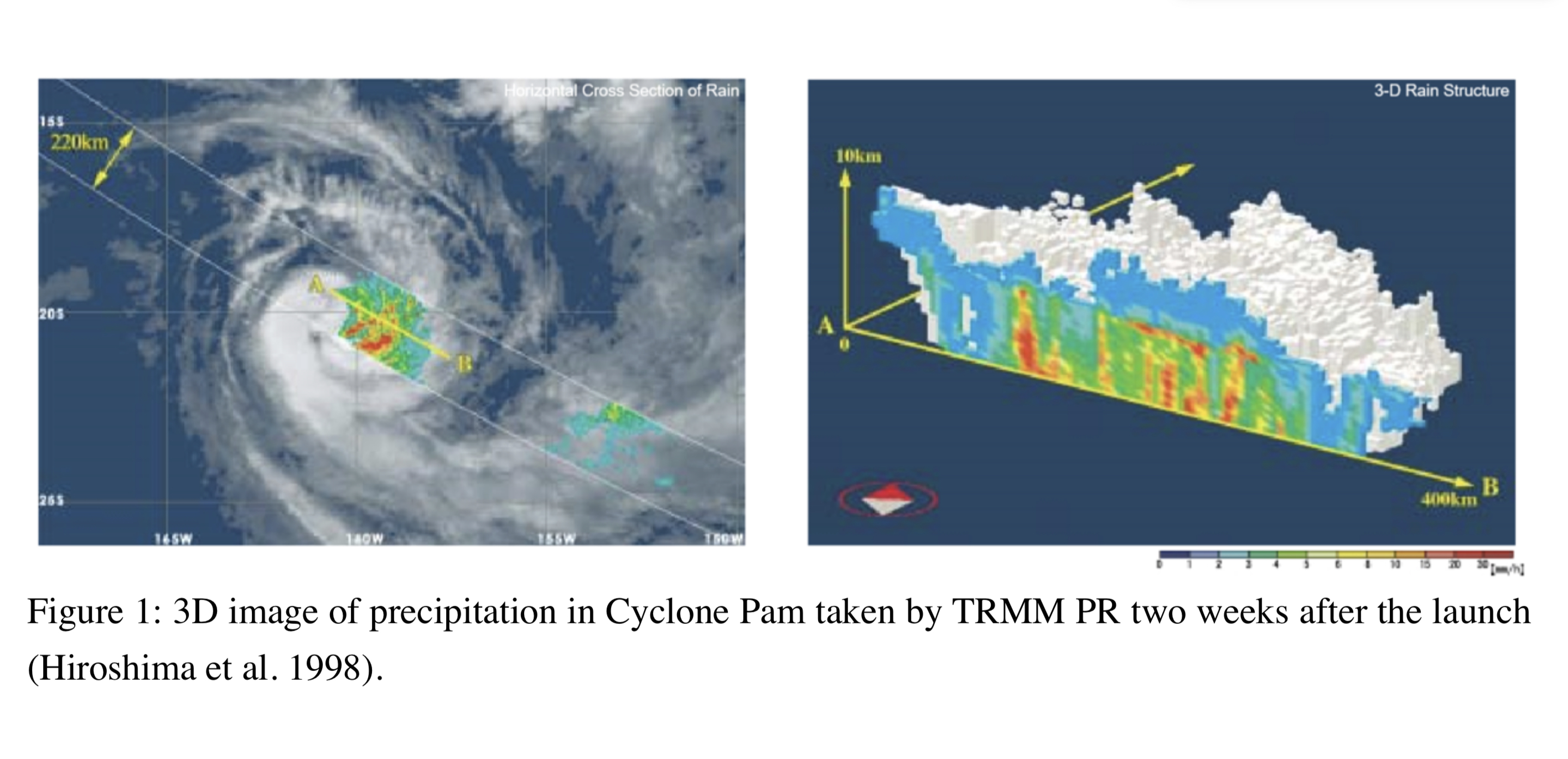Graphical Abstract
Nakamura, K., 2021: Progress from TRMM to GPM. J. Meteor. Soc. Japan, 99, 697-729.
Special Edition on Global Precipitation Measurement (GPM): 5th Anniversary,
https://doi.org/10.2151/jmsj.2021-035
Early Online Release
Graphical Abstract
Published
Plain Language Summary:
The Tropical Rainfall Measuring Mission (TRMM) satellite was launched in 1997, and the observations continued for more than 17 years. The features of TRMM observation were as follows:
- It followed a non-sun synchronized orbit that enabled the diurnal variation of precipitation to be investigated.
- It carried a precipitation radar (PR) and microwave and infrared radiometers along with a lighting sensor and a radiation budget sensor, which enabled the study of the global characteristics of precipitation systems, as an example shown in Fig. 1.
- It worked as a standard reference for precipitation measurements for other spaceborne microwave radiometers, which enabled global rain maps to be developed.
Highlights:
-
The paper describes the progress from the Tropical Rainfall Measuring Mission (TRMM) to the Global Precipitation Measurements (GPM) highlighting Japan’s contributions.
- TRMM’s main feature is that it carried the first space-borne precipitation radar which enabled the three-dimensional structure of precipitation globally.
- GPM extended the coverage of TRMM to mid- and high-latitude regions.
- The utilizations of the global precipitation maps have widely expanded.







